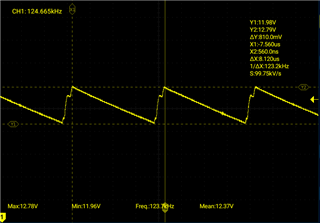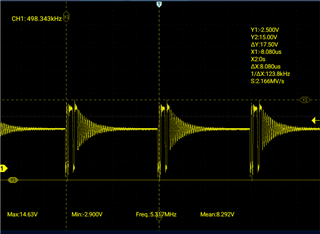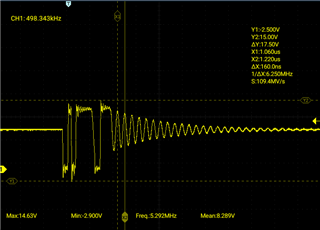Other Parts Discussed in Thread: TPS61089, LMR62014, TPS61170
Hi,
I am currently using the LM2623-Q1 in one of my design with the following requirements:
- Vin [6;8.4V]
- Vout 12V
- Load: <= 0.4A
I followed the reference design but the capacitor C3 is a bit tricky to select. I removed it so it uses the default 17% duty cycle to application note AN-1221.
Selecting the correct resistor R3 is also tricky since the datasheet only shows input voltage up to 4.2V. I went for a 200k resistor.
RF1 is 866k and RF2 is 100k, this should in theory lead to an output voltage of 11.978V
In practice I observe an output that indeed reaches 11.98V min, but with a swing up to 12.6V. I also see that the switching frequency is very low, around 140kHz.
The ripple would surely be less with a higher switching frequency but I don't understand how to increase it. I tried decreasing R3 value with no beneficial effect.
Below is the schematic (not that the reference designators do not match the datasheet, sorry about that)
Thanks in advance for your help





